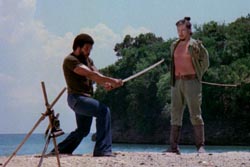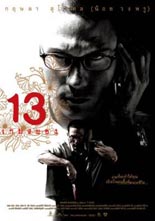
 In Bangkok, 32-year-old Yamaha instrument salesman Phuchit — “Chad” in the English dub — is fired at the most inopportune time: when he is in debt to the tune of tens of thousands. Potential salvation arrives in the form of an anonymous cellphone call inviting Phuchit (Krissada Sukosol, The Adventures of Iron Pussy) to play 13: Game of Death.
In Bangkok, 32-year-old Yamaha instrument salesman Phuchit — “Chad” in the English dub — is fired at the most inopportune time: when he is in debt to the tune of tens of thousands. Potential salvation arrives in the form of an anonymous cellphone call inviting Phuchit (Krissada Sukosol, The Adventures of Iron Pussy) to play 13: Game of Death.
With a baker’s dozen of challenges, the mild-mannered Phuchit has the opportunity to win $1 million, all or nothing. Early rounds seem simple enough — swat a fly, make three children cry, rob a bum — then balloon in complexity to demented extremes, including — what else? — murder. For all the wrong reasons, the most memorable mission is the fifth, in which our desperate, depressed hero must consume a plate of feces drizzled in a beef gravy. At least I hope that was gravy; either way, the scene is a true stomach-churner, made further disgusting by the protagonist’s face and clothes bearing stains and smears from his lunch for the rest of the movie.
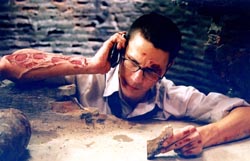 You may not proceed beyond that, and I can’t say I recommend anyone do. The “let’s play a game” scenario has fueled dozens of fine, credibility-stretching thrillers, but 13: Game of Death squanders its massive potential even before Phuchit’s visit to the restaurant (for which I’d love to read his Yelp! review).
You may not proceed beyond that, and I can’t say I recommend anyone do. The “let’s play a game” scenario has fueled dozens of fine, credibility-stretching thrillers, but 13: Game of Death squanders its massive potential even before Phuchit’s visit to the restaurant (for which I’d love to read his Yelp! review).
Matthew Chookiat Sakveerakul (writer of the 2008 girl-powered martial-arts movie Chocolate) begins the Thai-language film in earnest, then suddenly introduces comedic elements that are not present in the initial quarter. In high-stakes stories of life or death, you can’t go from slapstick to samurai swording a dog and expect to keep the audience to stay alongside you. It just doesn’t work, especially when the running time overstays its welcome by a good 30 minutes of nearly two hours — a bane of many Asian genre pics, Thailand included.
Throw in an ending that’s terrible and two people have lost this Game: Sakveerakul and the viewer. —Rod Lott

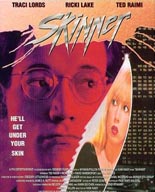
 Parents, as tempting as it is, do not conduct an autopsy on your spouse in front of your 6-year-old boy. He’ll only grow up to be the kind of man who kills prostitutes just so he can slice off their faces and wear them over his own like dime-store Halloween masks. This probably goes double if your last name is Skinner.
Parents, as tempting as it is, do not conduct an autopsy on your spouse in front of your 6-year-old boy. He’ll only grow up to be the kind of man who kills prostitutes just so he can slice off their faces and wear them over his own like dime-store Halloween masks. This probably goes double if your last name is Skinner. 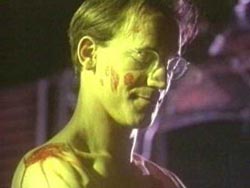

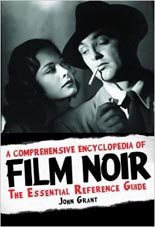
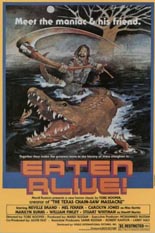
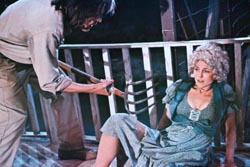
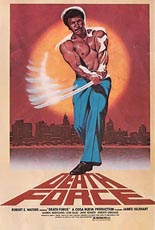
 Fresh from warring in Vietnam, Doug Russell (James Igleheart,
Fresh from warring in Vietnam, Doug Russell (James Igleheart, 